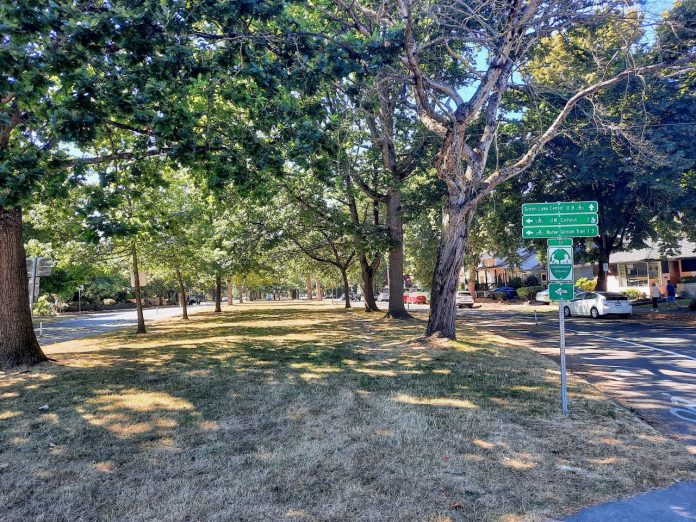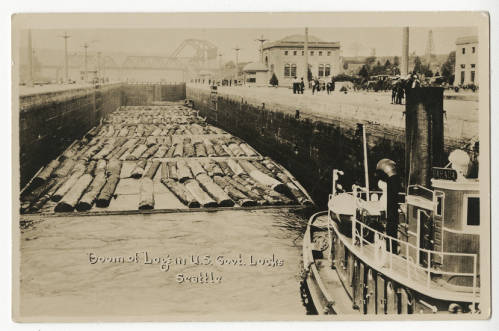Unpave paradise and take down that parking lot.
Trees in Seattle are facing a new threat, not from beetles or the axe, but from legislation. Sponsored by land use committee chair Dan Strauss and announced by Mayor Bruce Harrell, the long anticipated tree legislation promises to protect the tree canopy while not getting in the way of new houses. As Strauss told The Urbanist, “We have the ability to both protect trees and create the housing that the city desperately needs. And that’s what this bill does.”
Alas, that is probably not accurate. The proposed ordinance adds 40-odd pages of text to the city’s already ponderous ordinance, but doesn’t quite get around to the overall point of planting lots more trees. The problems are twofold, one issue is legislative and the other is Seattle’s own backwards way of doing anything.
The legislative issue is that the proposed tree ordinance is simply too complex for its own good. It spends a ton of text dividing trees into four categories, increasing protections as the girth of a tree increases. Permits and replacements are required for removing trees exceeding 6 inches in diameter. Requirements increase at 12 inches and any tree over 24 inches is barred from removal without extensive paperwork. There’s special provisions for trees with multiple trunks, and allowances provided if the site is being developed and removal is part of a site plan. The new rules have been called “all stick and no carrot.”
Dividing the city’s trees into tiers, then putting the screws to homeowners as the trees age insures only one thing: fewer trees are going to age and make it into upper tiers. Whether its by action or neglect, homeowners will remove unwanted trees from their yard. Period. Making those hurdles higher only guarantees the city’s trees will suffer under the provisions of this ordinance.
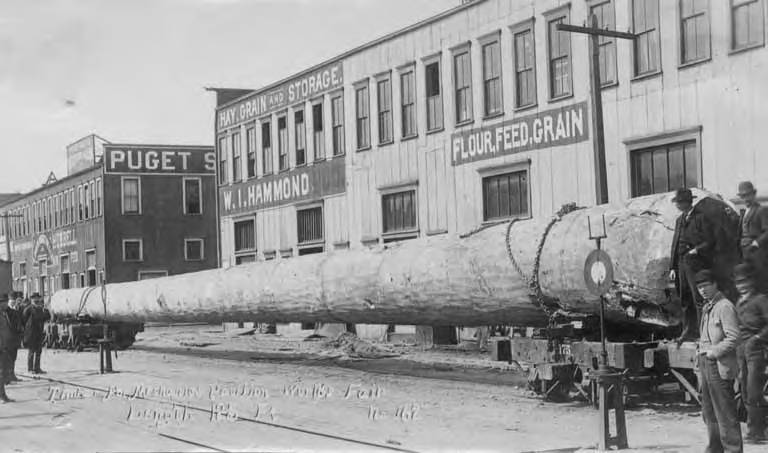
There are parts of the bill that make a lot of sense. Permitting design departures to protect trees is a great idea. Full tree assessments by competent arborists during the development process can be useful for some lots. And establishing permanent deed covenants for tree areas may make sense in some developments. But none of this requires a brand new conceptual framework for tree assessment and reams of paperwork to support it.
In many ways, the proposed tree ordinance is a standard issue piece of Seattle legislation. We find something we love, then trap it in a gilded cage. It’s how we’ve turned artists residences into those weird ground floor fishbowls appended to apartment buildings. It’s how we’ve taken granny flats and turned them into multi-million dollar cottages. We wuv it soooo much that we squeeze it and hug it and name it George, killing the beautiful and the unique in the process.
Of course, beautiful is in the eye of the beholder. Tree beholders tend to love convenient lollypops that don’t drop seeds, super precious flowering cherry trees, or big magnolias. None are indigenous to Seattle. Indeed, there’s now some 1,400 species of trees found in the city, a slight increase from the 33 species that dominated the region before colonization. The aging of the first wave of non-native deciduous trees is a leading cause for the city’s tree canopy loss. And indigenous trees don’t often get planted because they’re lawn wrecking crabapples or peeling, spindly madronas.
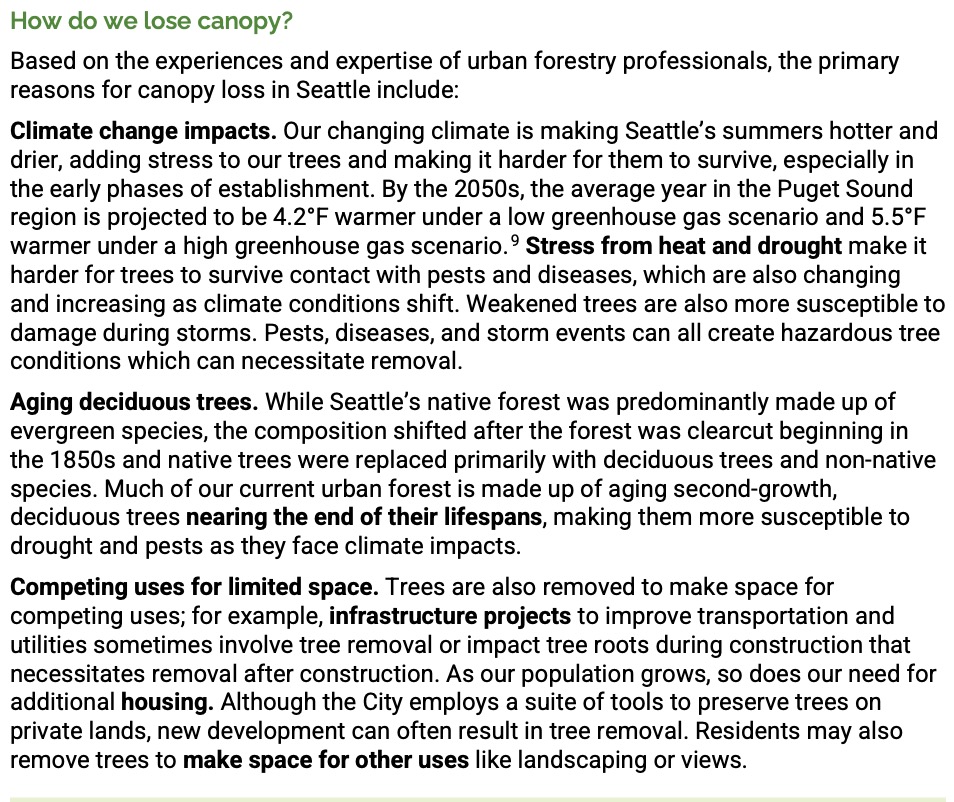
Which leads to the second issue with the tree ordinance. The trees and the forests being protected are not original. Seattle strip mined its landscape, denuding the entire pair of peninsulas of every significant tree. Only then did we start replanting, but not before we sectioned off the land and laid out a street grid. The city’s current trees and forests are completely at the service of its roads.
Street trees are the one place where there is some opportunity for the legislation to expand the tree canopy, but those new rules only maintain the current, upside-down relationship between cars and trees. Street tree species are selected to prevent dropped fruit on cars. They’re selected to live in the “harsh urban landscape” that’s created by soot spewing engines. The size is determined to fit under power lines or not drive roots into pipes. And trees are regularly removed to make way for parking, as the cherry blossoms were on Pike Street this spring.
Even though the new legislation spends a few pages talking about street trees, it does little to actually turn this dynamic in any appreciable way. Frankly, like most of the legislation, it kicks most of the city’s responsibilities for greening the right of ways to folks building new houses. The goal of expanding the tree canopy only comes as one item among protecting utilities, accessing the street, and matching trees to the available space in the planting strip. Literally, the ordinance misses the forest for the street.
A real change would rewrite the relationship between Seattle’s streets and tree canopy. But that would mean breaking the gilded cage mentality. You see, cages work both ways. Not only do they hold up something lovely for adoration, they’re also tightly controlling to avoid messes on the couch. Trees are living things that are messy, picky, and expensive, particularly when they are shoehorned into narrow planting strips. The new tree ordinance doesn’t expand the tree canopy. It invites more tiny, lonely islands of sickly trees to wilt along highways.
The biggest barriers to continuous tree canopy are the city’s streets, and Seattle’s city council has complete control over those. If a tree is important enough to alter development of a house, it’s important enough to alter the parking space in front of that house. The council can use the new ordinance to show its leadership.
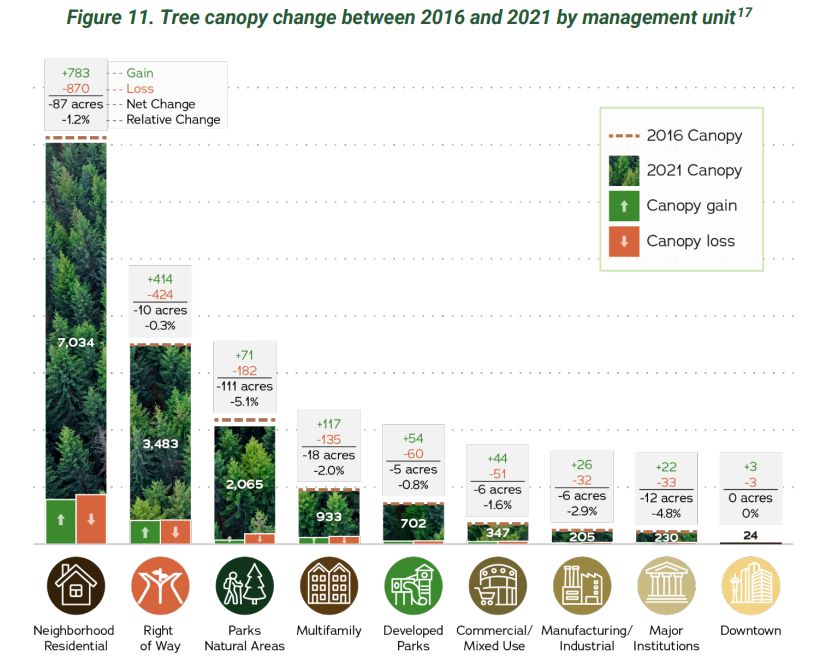
Instead of relying on postage stamp yards preserving trees here and there, the city can truly expand the tree canopy by connecting parks and neighborhoods with redesigned parkways. Take the city’s immense arterials and replace parking and travel lanes to create broad boulevards of real, continuous green coverage. Less asphalt, more foliage. The Olmstead Brothers proposed it a century ago. We do it on a couple select streets already, like the 14th Avenue Gemenskap Park in Ballard, Ravenna Boulevard, and 17th Avenue north of UW. A real tree ordnance would be the blueprint for more, distributed equitably through the city. Otherwise, the new tree legislation is just shifting the onus to homeowners or sticking a few more lollipop plastic trees in a cloud of exhaust.
Councilmember Strauss is correct, there does not need to be antagonism between abundant housing and abundant trees. We can have both a grand green canopy and affordable homes for all, unless we relegate housing and trees to fight over narrow, un-automobiled strips of land. We don’t need four tiers of expensive tree concepts or incentives for squeezing in a single new tree well. If the city wants its citizens to care about trees, the city can start by showing what it means to really prioritize trees.
Ray Dubicki is a stay-at-home dad and parent-on-call for taking care of general school and neighborhood tasks around Ballard. This lets him see how urbanism works (or doesn’t) during the hours most people are locked in their office. He is an attorney and urbanist by training, with soup-to-nuts planning experience from code enforcement to university development to writing zoning ordinances. He enjoys using PowerPoint, but only because it’s no longer a weekly obligation.


